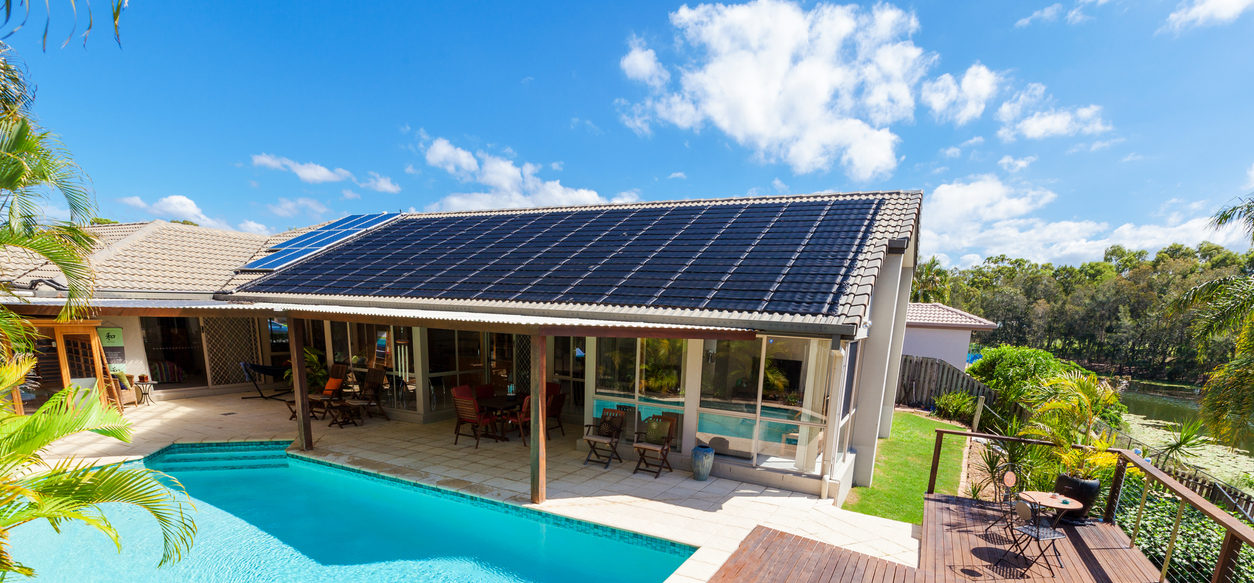As the cost of solar equipment goes down, more people are seriously considering putting an installation up at home. But a solar panel installation isn’t cheap. It’s a serious investment, so it’s important to get the setup right.
The only problem is, most people are completely new to solar energy so figuring out how things should be set up isn’t always clear. One of the biggest questions is how many solar panels will be needed to power the home. Did you know the size of your home isn’t the most important factor when you’re trying to determine panel count?
Yep, there are a few other things that matter a whole lot more, and that’s what we’re going over in today’s post. Keep on reading to learn exactly what should be factored into the solar panel equation.
How Accurate Are Solar Power Calculators?
First, let’s talk a moment about solar power calculators. The easiest way to figure out how many solar panels you need is to use a solar power calculator. While a calculator can give you a good idea of how many solar panels you’ll need, it’s going to be just that – a rough estimate.
One of the biggest takeaways from solar power calculators is getting a look at what factors are being considered. It can provide direction for analyzing your personal needs and getting a more accurate estimate. Instead of generic measurements, you’ll be using exact numbers specific to your home and energy needs.
So, what steps should you take to figure out how many solar panels will be needed? There are five things you should do to get a better count.
Analyze Your Electric Bills
The first thing you should do is take a look at your electric bills over the last year. It’s important to analyze your energy use during all four seasons. Identify where the peaks are because your solar panels will need to produce enough energy to meet your highest demand.
One thing to look for is whether your year-over-year energy use is going up, down or remaining the same. If it’s trending upward you’ll want to seriously consider adding enough panels to produce more energy than you currently need so it’s adequate for future demand.
Some specific things to note include:
- Average energy use in kilowatt-hours
- Hourly, daily and weekly
- Peak energy use
- Energy use in watts
Many people mistakenly think the square footage of their home is a factor. Home size isn’t that important because it doesn’t determine energy use. It’s highly influential, but in reality a home that’s 1,000 square foot could use the same amount of energy as a 2,000 square foot house.
However, one physical characteristic that can come into play is the size of the roof.
How energy is used in the home is much more important comparatively. To make the most accurate estimation you’ll want to find the daily average energy use. Then add 25% to that to ensure your energy needs are covered at all times.
FUN FACT: The average American household uses 900 kWh of electricity every month.
Look Into the Sun Exposure and Climate
You can’t capture solar energy unless you have a nice sunny spot for the panels. Climate also plays a critical role in solar panel performance. Certain weather conditions lower the efficiency of panels, and that needs to be factored into the calculations.
Resources like Weather.com and the National Renewable Energy Laboratory can provide you with some hard numbers, like the average number of days there’s sunshine in your area, average snowfall/rainfall and the average temperatures.
Peak sunlight hours is particularly important. Keep in mind, the daily average is going to vary based on the time of year. In general, the sunnier an area is the fewer number of panels will be needed.
Research Types and Sizes of the Panels Used
Early adopters of solar energy had far fewer choices than today’s consumers in terms of panels. An entire post or two can be written just on the different types of solar panels that are available today and how they impact energy generation.
The two most important things to consider is the size and efficiency of the panels. The wattage of a panel (ranges from 150-370 watts) largely depends on these two factors. Cell technology and construction also makes a difference.
The most important thing to remember is that the more efficient a solar panel is the more wattage it produces. Higher wattage per panel means fewer panels are needed.
Putting It All Together
Here’s a calculation that can be used once you’ve gathered the information above.
Household Hourly Energy Requirement x Peak Sunlight Hours / Panel Wattage = Number of Solar Panels Needed
Talk With a Few Professionals
Once you have a better idea of what goes into solar arrays and your home’s needs, it’s a good time to schedule consultations with at least 2-3 solar companies. They’ll want to examine your property and the sun exposure to determine what type of solar power setup is possible.
One of the most important things to go over is the types of solar panels that can be used. The company should make suggestions based on all of the factors listed above.
Discuss your solar goals with the experts. Do you want your home to be completely solar powered? Do you want to lower your carbon footprint? Is return on investment or value-add a top priority? Talk through your expectations so that the solar companies know what you want to accomplish.
Don’t have the optimal setup for a solar panel system? You can still get a clean power supply from Verde Energy. Our electricity plans are powered by renewable energy sources that are expanding every day. See which renewable Verde Energy plans are available in your area.



